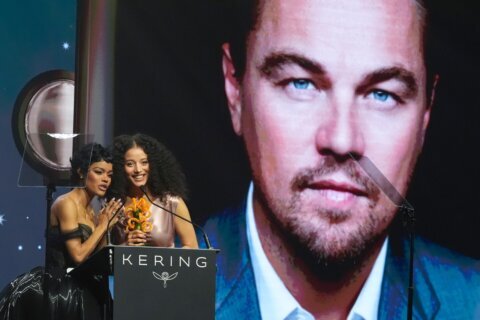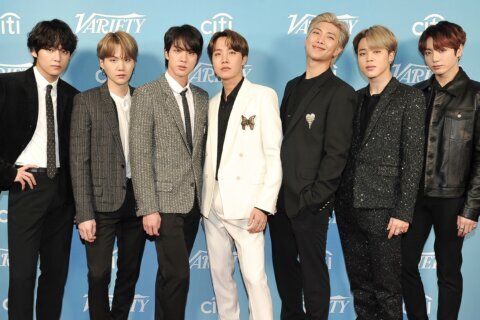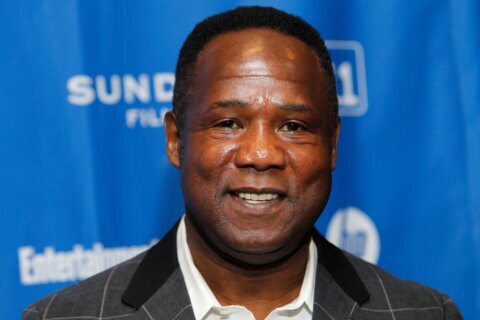WASHINGTON — Based on a novel by Pierre Boulle (“Bridge on the River Kwai”) adapted by Rod Serling (“Twilight Zone”) and Michael Wilson (“A Place in the Sun”) under the direction of Franklin J. Schaffner (“Patton”), the original “Planet of the Apes” (1968) became a science-fiction classic with a quotable Charlton Heston and one of cinema’s most shocking twists.
Over the years, interest gradually faded after four movie sequels from 1970-1973, two TV series from 1974-1975, and Tim Burton’s disappointing 2001 remake. So it’s with sheer joy that we’ve watched this storied franchise return to greatness with a powerful prequel trilogy.
“Rise of the Planet of the Apes” (2011) showed the origin of evolved chimp Caesar gaining his human abilities in a San Francisco zoo; “Dawn of the Planet of the Apes” (2014) saw Caesar desperately trying to keep the peace between mutually fearful apes and humans; and now, “War for the Planet of the Apes” (2017) provides a fitting conclusion to Caesar’s proud reign.
Set two years after the events of “Dawn,” Caesar (Andy Serkis) has watched his army of apes suffer heavy losses at the hands of a vicious military faction dubbed Alpha-Omega. The group is lead by a genocidal Colonel (Woody Harrelson), who wants to wipe apes off the planet, as well as the gorilla Red, who’s defected to the human side after the death of evil ape Koba.
Let’s face it — the story of the 1968 original will always remain superior to any of the “monkey see, monkey do” imitations, but the one thing that dates that classic is its prosthetic ape costumes. Today’s technology has advanced to the point that we actually feel like we’re watching living, breathing primates on screen, rather than humans in bulky ape costumes.
In fact, it’s become so believable that some continue to underrate the brilliant performance by Serkis, the motion-capture guru behind Gollum and King Kong. It’s beyond time that the Oscars evolve and recognize him as more than just a gimmick performer, but rather a truly gifted actor in his own right. After all, he is physically on set with the other actors, creating the apelike body movements, while motion-capture sensors record his every facial expression.
In this light, “War” may be his best pure performance, his face emoting Caesar’s internal conflict. Not only is this a “War for the Planet of the Apes,” it’s actually a “War for Caesar’s Soul,” as flashes of the vanquished Koba tempt him to seek revenge for painful family scars. We instead root for him to embrace his better angels with trusty friend Maurice (Karin Konoval), the zany sage Bad Ape (Steve Zahn) and the mute human girl Nova (Amiah Miller).
Caesar’s fascinating character arc marks another successful script by “Dawn” writer/director Matt Reeves (“Cloverfield”) and his co-writer Mark Bomback (“Unstoppable”). Just as their “Dawn” script was a brilliant allegory for the strategy of war and peace, their “War” script is laced with plenty of timely social commentary, from building walls to fearing “the other.” What does it say about society that the apes have now replaced the humans as the heroes in 2017?
By the time we arrive at the Colonel’s barbed-wire compound to meet Harrelson’s shaved, war-paint villain, we realize he’s a futuristic version of Marlon Brando’s Colonel Kurtz from “Apocalypse Now” (1979), a rambling madman consumed by mankind’s existential crisis. The only way to defeat him is to learn the lessons of cinema’s past, from the tunnel prison-break of “The Great Escape” (1963) to the explosive climax of “The Bridge on the River Kwai” (1957).
While some of these homages are blatant (i.e. graffiti reading “Ape-pocalypse Now”), you don’t need to get the references to enjoy the ride. It’s a film that can be appreciated on its own terms. However, the experience is enhanced if you’re familiar with the franchise, thanks to clever touches that set up the 1968 original, from the mute Nova to Caesar’s son Cornelius.
In the end, “War” is a fitting end to a powerful prequel trilogy. Like “The Dark Knight” (2008), the middle chapter, “Dawn,” marks the high point thanks to its parallel peacekeepers vs. warmongers: Caesar vs. Koba for the apes; Jason Clarke vs. Gary Oldman for the humans. Still, you could argue that “War” finishes stronger than “Dawn” with a final image of natural beauty captured by cinematographer Michael Seresin as Michael Giacchino’s affecting music swells.
After so many disappointing prequel trilogies, from “Star Wars” to “The Hobbit,” it’s wonderful to see a blockbuster series take itself seriously. Never once does it sacrifice character arcs or underlying themes for cheap popcorn thrills. It comes by its thrills naturally, earning our respect by taking the time to let us fall in love with its characters and care for their outcomes.
Take note, Hollywood — this is how it’s done. Here’s hoping all summer blockbusters evolve to embrace the “Planet of the Apes” model of motion capture and practical effects, rather than the “Transformers” model of digital characters and special effects. We want to feel the humanity behind our characters, even when they aren’t humans at all. It gives them a soul.
And you might not have one if you don’t shed a tear as Caesar takes his final bow.









